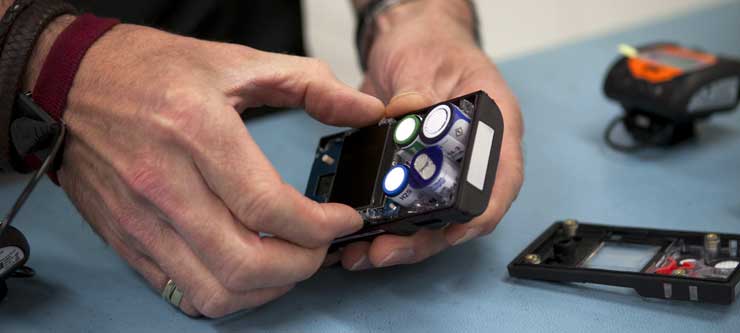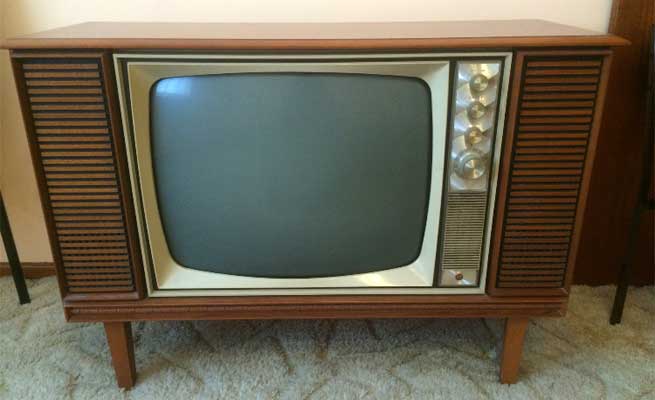
The centralised gas detector servicing model is a new paradigm, enabled by big data and the cloud, that is driving service levels up and costs down.
The data being generated, captured and used in our daily lives has increased massively. Terms such as “big data”, “internet of things” (IoT) and “cloud computing” are now common.
Internet of things (IoT) examples
At a personal level, we adopted smartphones first and now we’re watching smart TVs and wearing a smart device like Fitbit or Apple Watch.
Big data example
And for many of us the use of Google Maps to get traffic information is a daily routine. Of course, that means Google has a good idea of your frequent locations, which makes it easier for Google to recommend a restaurant or café that just turns out to be strangely convenient.
Entec’s use of big data & the cloud
The efficiency and convenience we experience in our personal lives also has tremendous applications within industry. In the case of Entec’s ability to deliver technical service to our gas detection customers, we use big data and the cloud to provide what we believe is best-in-class technical support.
Out with the old, in with the new
The traditional paradigm we all grew up with is the mobile service technician. I fondly recall our family television set breaking down so frequently that we had a service contract with Tisco.
As a child I would watch the Tisco technician turn up, slowly disassemble the giant TV until the lounge floor was covered with exotic components, generate wonderful aromas with his soldering iron, and then even more slowly reassemble the TV.

This is a great example of the “man-in-a-van” service model that is still common throughout large parts of the business world.
At Entec we still employ the “man-in-a-van” model because there are many instances where on-site service is required.
This traditional paradigm is, however, being overtaken by a new paradigm…
The data-driven centralised gas detector service model
In many cases, the centralised service model gives our customers faster and better service at a much lower cost.
Many of our customers own, lease or rent intelligent docking stations for their fleet of portable gas detectors. These docking stations allow all bump testing and routine calibrations to be carried out on-site.
Each time an instrument is docked, its operating history and current performance status is uploaded to the cloud-based iNet Control management system.
Our service team receive automated alerts of key alarms or warnings, and then proactively respond. [See the case study below for a real-life example.]
The response could be as simple as a phone call to site to discuss an issue. If the alert is about an actual or a pending instrument failure, the proactive response can be to immediately despatch a “hot swap” gas detector to site. The faulty unit is then returned to Entec for service or repair.
Faster, better AND cheaper?
Why is the centralised gas detector service model faster, better and cheaper than a (wo)man in a van?
Faster
The centralised service model uses overnight courier delivery. We can provide a replacement instrument to just about anywhere in New Zealand overnight.
Better
The local service tech may be able to respond directly to site, but equally there’s a good chance they are committed to another customer that day, or travelling out of the region, or on annual leave, or unwell.
There’s also a fair chance the service tech may not have the right tools or spare parts in the van on the day they’re needed. After all, there is a limit to what service vehicles can practically carry as a contingency.
Our customers have gas detectors on-site to save lives. A gas detector that is out of commission and waiting for a service technician to show up isn’t making anybody’s job safer.
Cheaper
A nationwide network of technicians is an expensive proposition. The centralised service model has significantly lower costs. These are passed on to customers in the form of lower long-term costs of ownership.
Talk to us about how you can benefit from this new paradigm – the centralised service model…
- Email gas@entec.co.nz, or
- Find out about Long-term Service for Fixed Gas Detection Systems here »
Centralised gas detector servicing case study
Entec has provided this comprehensive and proactive centralised gas detector servicing model to a large industrial customer in New Zealand since late 2015. They are located 500 km away from our service laboratory.
We work closely with a key contact at their site, and keep the amount of staff time to a minimum so they can focus on core operations.
With this approach, we have helped to remotely and proactively manage the health of their gas detector fleet. It is a not inconsiderable fleet either – they have around 350 gas detectors deployed all year round.
The key benefits they enjoy include…
- No downtime. Any pending issues (e.g. a sensor reaching the end of its useful life) are alerted to Entec, and we despatch a replacement unit to site.
- Bump tests and calibrations are performed on-site. This means their gas detectors are always available for use.
- Bump test records and calibration certificates are automatically generated and stored in the cloud. This makes asset record-keeping and compliance requirements much easier and more reliable.
- Their operations team can access a myriad of reports in the cloud-based software. From a high level “at-a-glance” overall health status of the entire fleet, right down to the detail of each and every alarm event on each instrument.
Talk to us about how you can benefit from this new paradigm – the centralised service model…
- Email gas@entec.co.nz, or
- Phone (06) 758-3030 ext 2 to talk to a gas detection expert.
Related content
- Find out how our NZ-based gas detector calibration, repair & service centre saved one customer 38%.
- Find out about long-term service for fixed gas detection systems here »